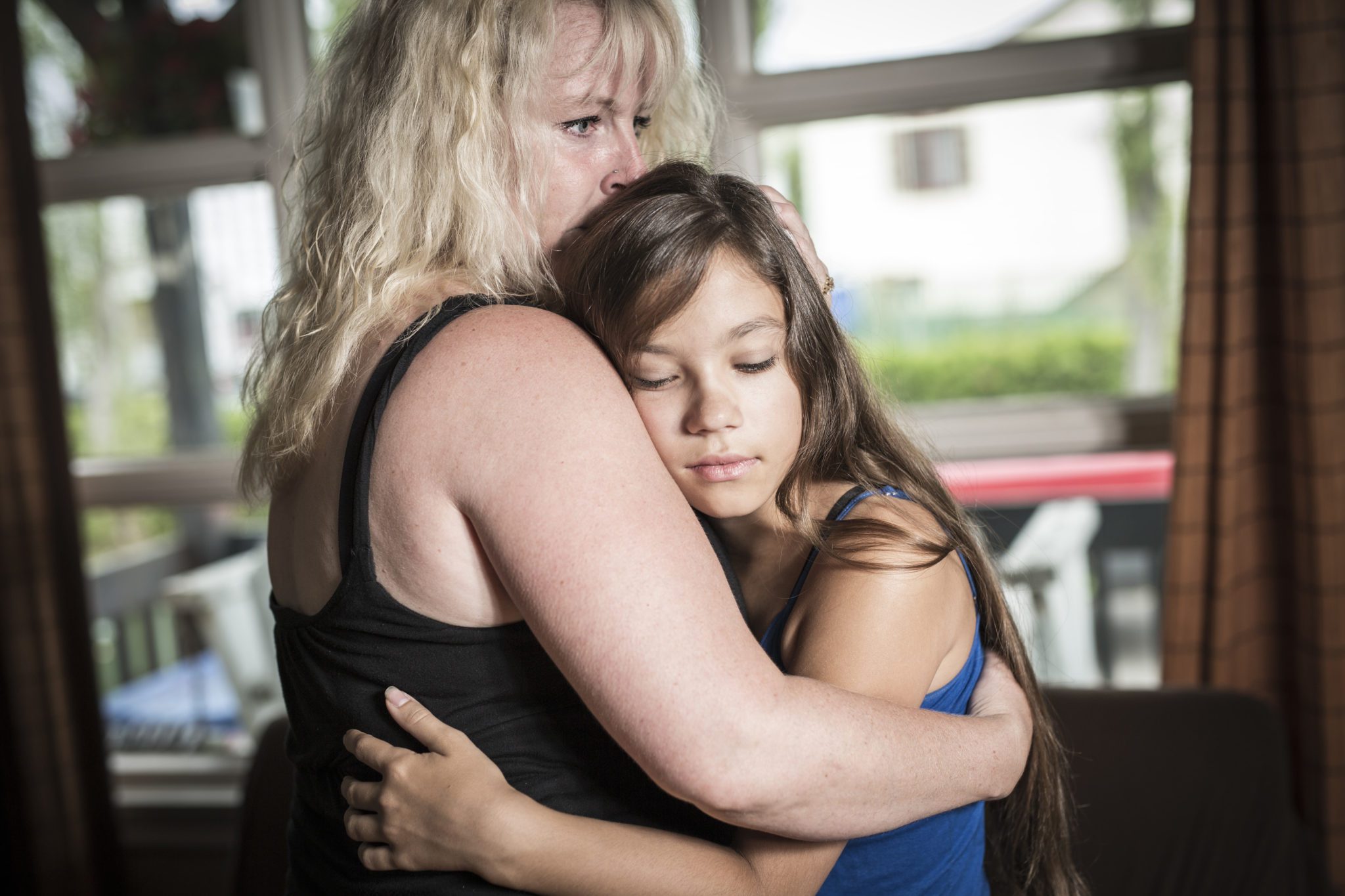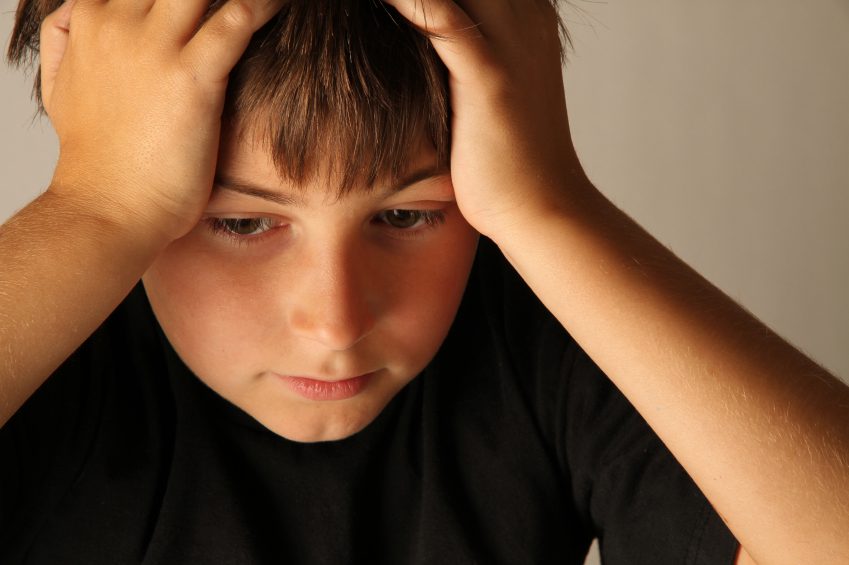Another Shooting – An Important Moment to Comfort and Talk With Our Kids

Posted in: Hot Topics
Topics: Culture + Society
Perhaps the hardest, certainly the saddest, and without question the most frustrating thing about sharing this blog post is that we have shared it now again and again over the past several years. Please do not allow the frequency of the recent, awful events to ever seem routine. The statistics that we share are still valid. The advice that we offer still holds. But we must, as a society, make changes. This can never be something that we come to expect.
– The Clay Center Team
In 2020, there were 611 mass shootings in the United States, an average of more than one a day, resulting in 513 deaths and 2,543 injuries. Since 2013, there have been at least 1000 incidents of gunfire on school grounds. In 2021 there were 693 mass shootings and in 2022 there have already been at least 601 reported mass shootings.
But it seems now that we need to turn our attention to mass shootings as hate crimes, as opposed to the previous horrors of school shootings. Neither is welcome to any of us. But the trend now is to kill out of hate, and this has largely been directed toward racial, ethnic, and religious groups, such as African Americans, Asians and Asian Americans, and Jewish people.
CNN reported:
“More than 10,000 people reported to law enforcement last year that they were the victim of a hate crime because of their race or ethnicity, sexual orientation, gender, religion or disability — a number that has been on the rise in recent years, according to FBI’s annual hate crime statistics report. The amended report, released on Monday, found more than 7,700 criminal hate crime incidents were reported to the FBI in 2020, an increase of about 450 incidents over 2019. The increase comes even as fewer agencies reported hate crime incidents in their jurisdictions to the FBI than in previous years. Last year had the highest tally of reported hate crime incidents since 2008, when 7,783 incidents were reported to the FBI.”
Who wouldn’t be shocked and terrified by these statistics? Anyone reading would come to the alarming conclusion that our country is not a very safe place.
And today is no exception. In fact for many, it seems to support a “new normal.” Check the online news, and you’ll immediately find coverage of recent shootings across the country. Devastatingly, we can keep adding numbers to the list.
We at the Clay Center are profoundly distressed by this, and fear that the impact of terror on our children and young people will be devastating. What kind of a world can they look forward to? How do we address their concerns, questions and fears? How do we explain the upsurge of White Supremacism and “Replacement Theory”?
Our hearts go out to the people on the East Side of Buffalo, in Southern California, in Uvalde, Texas… They did not deserve these horrifying acts of blatant hatred and violence. Nor does any community.
The guides for caregivers in this blog repeated year after year are unchanged. But the context is different. When you read it, think about why anyone would kill another person because of the color of their skin, their sexual identity, or their religious beliefs.
An Important Moment to Comfort and Talk With Our Kids
So, how do we respond to these horrifying incidents? Naturally, each evokes a sense of terror, fear for our own safety, and sadness for the victims and their loved ones. Was it yet another random act of violence by a troubled individual, or retaliation by a disgruntled former employee? In some ways, the impetus of any given attack does not matter; overall, however, each event makes us wary and vigilant of another calculated death at our doorstep—no matter where we live in the United States.
But, let’s look beyond our immediate gut reactions and take things step by step. As with any crisis, we can expect media coverage to extend across our televisions, computers, and mobile devices. The worry evoked is therefore exponential, and as parents and educators, we must consider the impact on the most impressionable and vulnerable among us—our kids. Especially when kids are among the victims.
The sad and scary truth is that murders do occur in the U.S. with some regularity. But, for a population of over 300 million, thankfully, they do not touch most of us directly. The fact remains—even on days like today, when it doesn’t feel so—that we are fortunate to live in a fundamentally safe nation.
The point we want to address here is how we can help our children live with confidence and self-assurance in this world, without fear that their everyday life will be filled with imminent danger.
How then, can we help our kids make some sense of tragedies like these, and put them into perspective?
As with any of our parenting guidelines, the approach for each child should be developmentally appropriate. What helps a 7-year-old cope with fear and anxiety may not be the same for a 17-year-old.
Here are some basic tips for parents:
Toddlers And Preschoolers
Very young children are more disturbed by their parents’ and caregivers’ distress than by the actual event itself. They may not fully understand what happened, or see it as more than an act on TV. That’s why they’re comforted more by your actions than your words. Be careful how you present yourself to them, both emotionally, and in conversation with others. Naturally, they will pick up on your reactions.
- Expect young children to regress a bit emotionally. They may become clinging or whiny, have difficulty sleeping, or start wetting their beds. The more patient and reassuring you are, the more quickly these episodes will pass.
- If you wish to watch or listen to news coverage, do so while your very young children are not in the room; they do not yet have the ability to put the frightening images they see into perspective.
School-Aged Children
Encourage your school-aged children to share their feelings and concerns with you. Certainly, they will have heard about this event. Reports of the shooting may frighten them, even if they’re afraid or embarrassed to admit it. Assure them that it’s all right for them to be upset, and that you’ll do everything you can to protect them from harm.
- You might ask what specifically worries them. Especially if the gun person has a relationship to the victims, it’s wise to reassure them that you work in a very safe place—and, that even though you might have disagreements with coworkers, that you solve your problems with words, not violence.
- Remember that children often work through emotional issues with play instead of words. Don’t be surprised if your children use toys to replay the images they’ve seen or imagined. This is healthy. It can also give you insight into their fears and misunderstandings.
- Expect that your children might ask the same questions several times. Be patient. Remember that by asking these questions, they’re showing you that they trust you and what you say.
- We would not recommend permitting school-aged kids to follow news coverage of this event. However, if they have already seen or heard about the breaking news, be available to clarify their concerns.
- Remind your children that there are many more good people in the world than there are bad people, and that the good people will always try to take care of and protect them.
Teenagers
Adolescents may be scared; they will wonder what this means for the lives they’ll lead as young adults. For example, ‘Will I be safe in college, or in the community where I live and work?’ They may struggle with questions about justice, power, the use of weapons—issues that directly relate to violent events.
- Let your teenagers listen as you discuss the event with other adults. If they choose to chime in, welcome their participation—even if you might disagree with what they have to say. Simply talking things out will help them to put their concerns into perspective. For example, they may wish to talk about gun control. Welcome these discussions, as they will certainly play out in the media.
- Sit with them as they watch the news coverage. Comment on what you’re seeing, and listen openly to what they have to say as well.
- Sometimes it’s easier for teens to talk about disturbing things when they don’t have to look you in the eye. That’s why some of the best discussions take place while you’re doing something else, such as playing a game, driving in the car, or doing household chores.
- Share your feelings with them. This gives adolescents permission to do the same with you.
If nothing else, remember that kids of any age will want to know the answer to these three fundamental questions:
- Am I safe?
- Are you, the people who take care of me, safe?
- How will this event affect my daily life?
Some media and political pundits may lobby for the extensive use of metal detectors in schools and public places; others may advocate for fewer restrictions on hand guns and concealed weapons. We disagree with the latter; evidence has shown repeatedly that placing greater restrictions on hand guns is most effective.
But, we are not here to argue that point.
First and foremost, it’s our responsibility to comfort and reassure our kids, and to shield them from living with paranoia and excessive fear. Then, let’s work together to find ways to help us all be kinder, more gentle people who oppose solving conflict through violence.
Was this post helpful?
Newsletter
Subscribe Today
Your monthly dose of the latest mental health tips and advice from the expert team at The Clay Center.
SubscribeMultimedia
Quick Jumps
Tag Cloud
-
addiction
ADHD
adolescents
anorexia
anxiety
autism
behavior
CBT
child development
children
college
communication
covid-19
depression
digital media
dyslexia
eating disorder
evaluation
family
fear
healthy development
learning
learning disabilities
learning disability
mental health
mental illness
parenting
parents
Podcast
PTSD
relationships
resilience
school
shrinking it down
social media
stigma
stress
suicide
technology
teenagers
teens
therapy
trauma
treatment
violence

 Share
Share Tweet
Tweet





